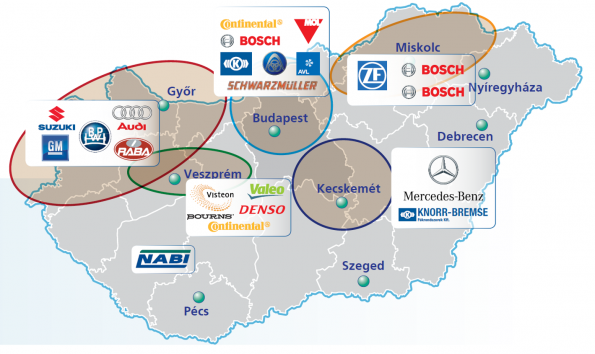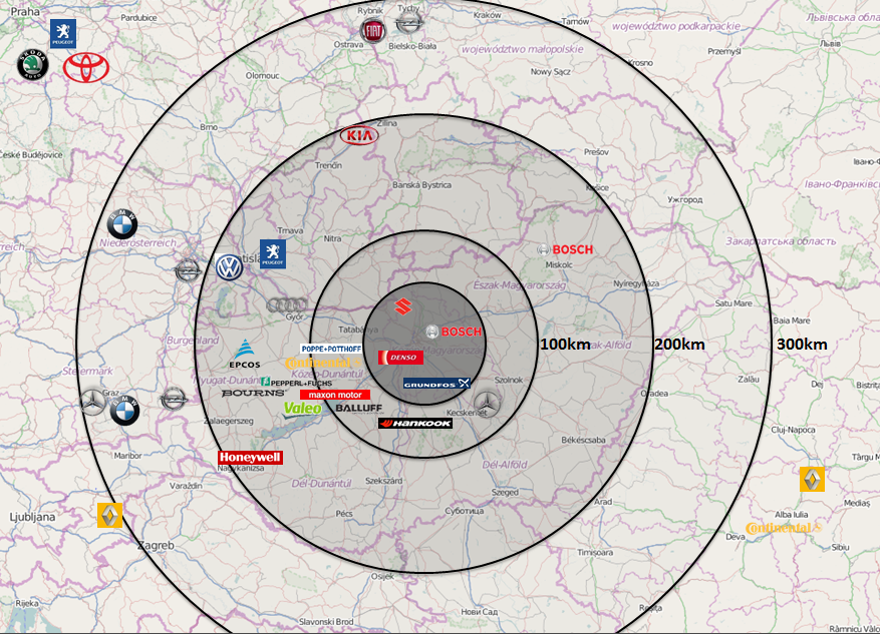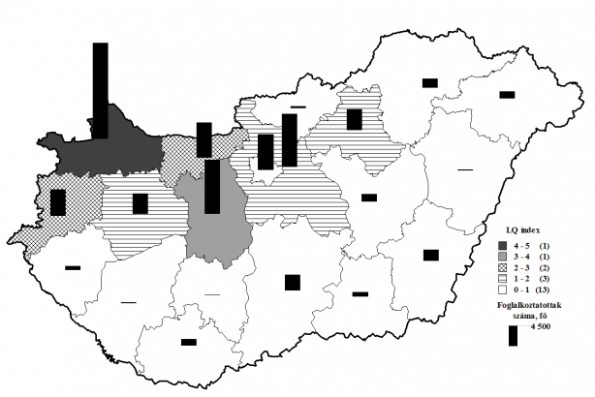Today’s vehicle manufactures are dealing with a growing trend to blend mechanical, electro-mechanical, digital control systems, and electronic design elements into one integrated system. While developing these complex electronic/mechatronic products is simply a matter of responding to market demand, coordinating the disparate engineering disciplines on a single design presents a set of demanding challenges for developers and manufacturers to overcome. How effectively companies are able to address these challenges carries with it a significant impact on a company’s ability to meet key targets that drive product profitability.
Middle-East European Automotive Situation
We briefly analyse the current situation (especially, the situation in Central and Eastern Europe), and outline the demands of industry addressed to higher-level education. The Central European region is called sometime the New Detroit because if we look to the figure on the right, we see that the 400 km radius of Budapest contains almost all of the most important car manufacturing companies. On this figure automotive supplier companies (TIER1 and TIER2) are not presented, which is also very strong in this region.


Concentration of Automotive OEM and TIER1 Industry in Hungary
In this figure we have presented the situation in Hungary, where we can see that in the Middle and North Trans-Danubian Region the automotive industry is very well represented. We can find here companies like Continental Teves, Valeo Electronics, Burns, General Motors, Audi, Visteon, Delphi, Luk, Maxon motors, Flextronics, Harmann-Becker etc. There are several multinational companies (e.g. Bosch, ZF, ThyssenKrupp, Knorr-Bremse, Continental, Valeo…) that are going to expand significantly their R&D capacity in Hungary within the next few years (close to 800 engineers, mostly in electrical engineering, mechatronics, computer science), which capacity should be made available

Main Areas of R&D in the Automotive Industry.
Vehicle Development
- Safety systems (crashworthiness, restraints, active/passive safety devices)
- Customer interface
Energy and Environment
- Combustion
- Electrochemical
- Recycling
Systems and Electronics
- Sensors
- Vehicle controls
- Telematics/vehicle communication
Materials
- Advanced lightweight materials
- Biomaterials
Manufacturing Systems
- Manufacturing processes
- Robotics
- Computer-Aided Engineering
- Nanotechnology